
Roots
The gentle hush of night often brings with it a sense of reprieve, a quiet surrender to the day’s conclusion. Yet, beneath the calm surface of slumber, our hair, particularly textured strands, navigates a nightly landscape filled with subtle challenges. It is here, in the unseen hours, that the scientific basis for hair protection truly takes hold, revealing a delicate interplay of biophysics, cellular rhythms, and environmental interactions. To truly understand why shielding our hair during sleep holds such significance, we must first descend to its very foundation, examining the intrinsic qualities that render it both resilient and vulnerable.

Hair Anatomy and Physiology for Textured Hair
At its core, a single strand of hair is a complex biological marvel, a protein filament primarily composed of keratin. This protein, organized into a layered structure, provides hair with its strength and flexibility. The outermost layer, the Cuticle, resembles overlapping scales, much like shingles on a roof. These scales, when healthy, lie flat, reflecting light and contributing to a smooth, shiny appearance.
Beneath the cuticle resides the Cortex, the primary bulk of the hair shaft, housing melanin, which dictates hair color, and cortical cells that lend hair its tensile strength and elasticity. The innermost layer, the medulla, is not always present and its function varies. For textured hair, this architectural blueprint takes on additional complexity. The unique helical or elliptical cross-sectional shape of textured hair strands means that the cuticle scales do not always lie as flat as on straight hair. This inherent characteristic can lead to a naturally more exposed cuticle, making textured hair inherently more susceptible to mechanical stress and moisture loss.
The very structure of textured hair, with its bends and curves, creates points of vulnerability. Each curve represents a potential stress point where the hair shaft is thinner or where cuticle layers may be more prone to lifting. This structural reality means that external forces, even those seemingly innocuous, can exert a disproportionate impact.
Understanding the inherent structural characteristics of textured hair reveals its delicate nature, making protective measures during sleep a biological imperative.

Hair Growth Cycles and Influencing Factors
Hair growth follows a cyclical pattern, a fascinating biological rhythm that governs the life of each strand. This cycle comprises three main phases:
- Anagen ❉ The active growth phase, where hair follicles are busily producing new hair. This phase can span several years.
- Catagen ❉ A brief transitional phase where hair growth slows, and the follicle begins to shrink.
- Telogen ❉ The resting phase, where hair ceases growth and eventually sheds to make way for new growth.
The health and duration of these phases are profoundly influenced by our overall physiological state, and sleep plays a non-negotiable role. During deep sleep stages, the body enters a repair and regeneration mode. This is when essential growth hormones, including those that support hair growth, are released.
Cellular turnover increases, and tissues undergo vital repair processes. A disruption in this delicate nocturnal balance can directly impact the hair growth cycle, potentially shortening the anagen phase and leading to increased shedding.
Consider a study published in the journal Integrative and Mechanistic Approach to the Hair Growth Cycle and Hair Loss which identifies poor sleep quality as a factor promoting the anagen to telogen transition, thereby reducing hair growth and fostering rest and eventual shedding. This suggests that the quality of our rest directly correlates with the vitality of our strands, a scientific affirmation of what many intuitively sense about “beauty sleep.”
| Phase Anagen |
| Description Active growth, new hair production |
| Impact of Quality Sleep Supports and prolongs this phase, promoting robust growth |
| Phase Catagen |
| Description Transitional phase, growth slows |
| Impact of Quality Sleep Maintains cycle health, prevents premature entry into telogen |
| Phase Telogen |
| Description Resting phase, hair sheds |
| Impact of Quality Sleep Minimizes excessive shedding, helps follicles return to anagen |
| Phase Adequate sleep directly supports the cellular repair and hormonal balance crucial for a healthy hair growth cycle. |

Why does Nighttime Movement Affect Hair Health?
The constant shifting and turning during sleep, estimated to be up to 40 times per night for the average person, generate mechanical stress on hair strands. This seemingly minor motion, compounded by the weight of the head, creates repeated friction between the hair and the pillowcase. This friction is a primary antagonist to the hair cuticle, causing the delicate, overlapping scales to lift, chip, or even break. When the cuticle is compromised, the inner cortex becomes exposed, leading to:
- Frizz ❉ Lifted cuticle scales scatter light unevenly, giving hair a dull, frizzy appearance.
- Tangles and Knots ❉ Roughened cuticles snag on each other, resulting in tangles and knots.
- Breakage and Split Ends ❉ Weakened hair shafts, deprived of their protective outer layer, are more prone to snapping and splitting, particularly at the ends.
- Moisture Loss ❉ An open cuticle allows precious internal moisture to escape, leading to dryness and brittleness.
This phenomenon is particularly acute for textured hair, as its inherent structural variations already present a more irregular surface for friction to act upon. The natural coils and bends have more points of contact, amplifying the potential for damage during sleep.
Moreover, sleeping with wet hair exacerbates these issues. When hair is wet, the cuticle swells, rendering the hair shaft more fragile and elastic. In this vulnerable state, friction against a pillow can cause significant cuticle damage and breakage. A damp environment also risks promoting fungal growth on the scalp, leading to irritation and other scalp issues.

Ritual
As the moon ascends and the world quiets, a profound opportunity for restoration presents itself, not only for our spirits but for our strands. The concept of a “nighttime sanctuary” for hair is not merely poetic; it is a practical wisdom born from understanding the delicate dance between science and mindful practice. Moving beyond the foundational knowledge of hair’s intrinsic nature, we turn our attention to the deliberate, caring actions that can transform sleep from a period of potential vulnerability into one of profound protection and rejuvenation for textured hair. This is where intention meets application, where everyday gestures become potent rituals.
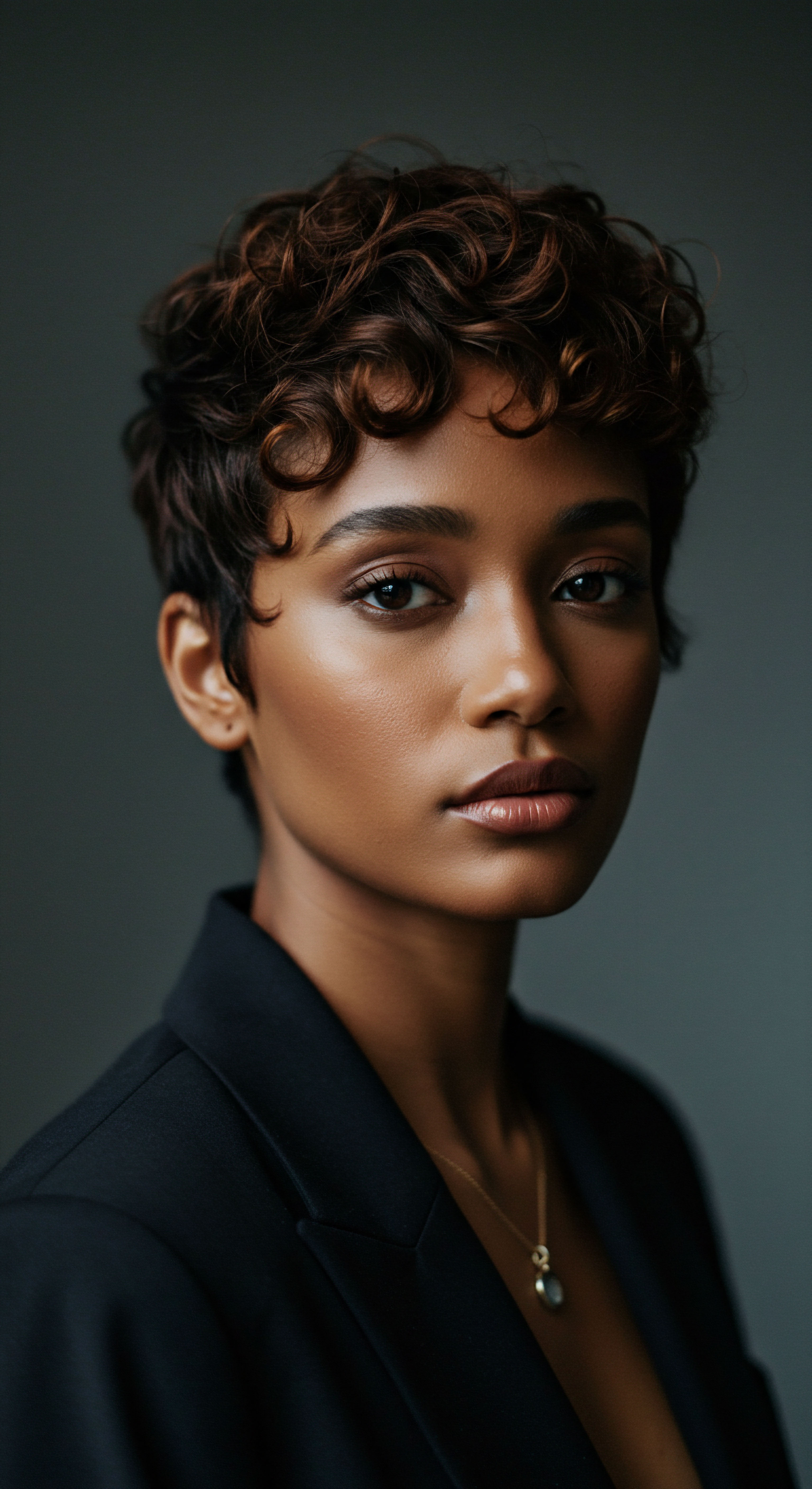
The Nighttime Sanctuary Essential Sleep Protection
The objective of nighttime hair care is to minimize mechanical stress, retain moisture, and preserve the hair’s structural integrity. This is achieved through a combination of thoughtful preparation and the selection of appropriate tools.
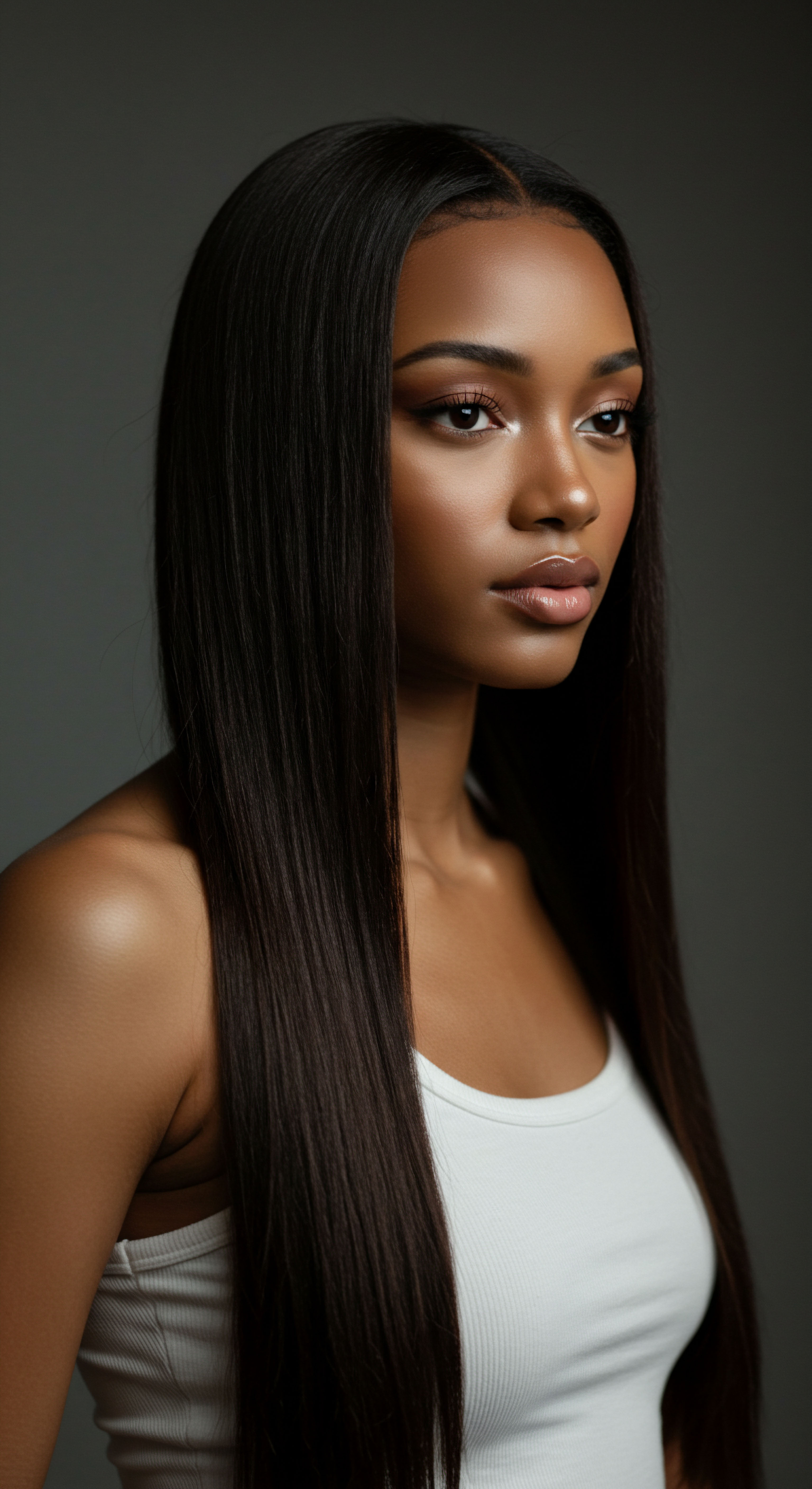
How do Materials Influence Hair Protection during Sleep?
The choice of pillowcase or head covering holds significant sway over hair health during sleep. Traditional cotton pillowcases, while comfortable, possess a relatively rough surface and are absorbent. This rough texture creates substantial friction as hair rubs against it during movement, leading to cuticle abrasion, tangles, and breakage. Furthermore, cotton readily absorbs moisture from the hair, contributing to dryness and dehydration, particularly problematic for textured hair that already struggles with moisture retention.
In stark contrast, silk and satin fabrics offer a dramatically smoother surface. This smoothness allows hair to glide effortlessly, significantly reducing friction and minimizing the mechanical stress on the cuticle. The result is less frizz, fewer tangles, and a notable decrease in breakage and split ends.
Beyond friction reduction, silk and satin are less absorbent than cotton, helping hair retain its natural oils and applied moisture throughout the night. This preservation of hydration is crucial for maintaining the elasticity and softness of textured hair.
Selecting sleep surfaces like silk or satin pillowcases profoundly reduces friction and preserves hair’s natural moisture, creating a healthier overnight environment.
A compelling aspect of this material difference is highlighted in studies examining the frictional properties of various fabrics. Research indicates that the coefficient of friction for silk is significantly lower than that of cotton. While specific values vary based on weave and fiber treatment, a general understanding suggests that cotton can exhibit a friction coefficient several times higher than silk when interacting with hair. This measurable difference directly translates to reduced mechanical stress on the hair shaft.
| Fabric Type Cotton |
| Approximate Friction Coefficient (Relative) High (e.g. 0.3-0.5) |
| Impact on Hair Increased friction, tangles, breakage, moisture absorption |
| Fabric Type Silk/Satin |
| Approximate Friction Coefficient (Relative) Low (e.g. 0.1-0.2) |
| Impact on Hair Reduced friction, less tangling, moisture retention |
| Fabric Type Lower friction coefficients on silk and satin translate to less hair damage during sleep. |
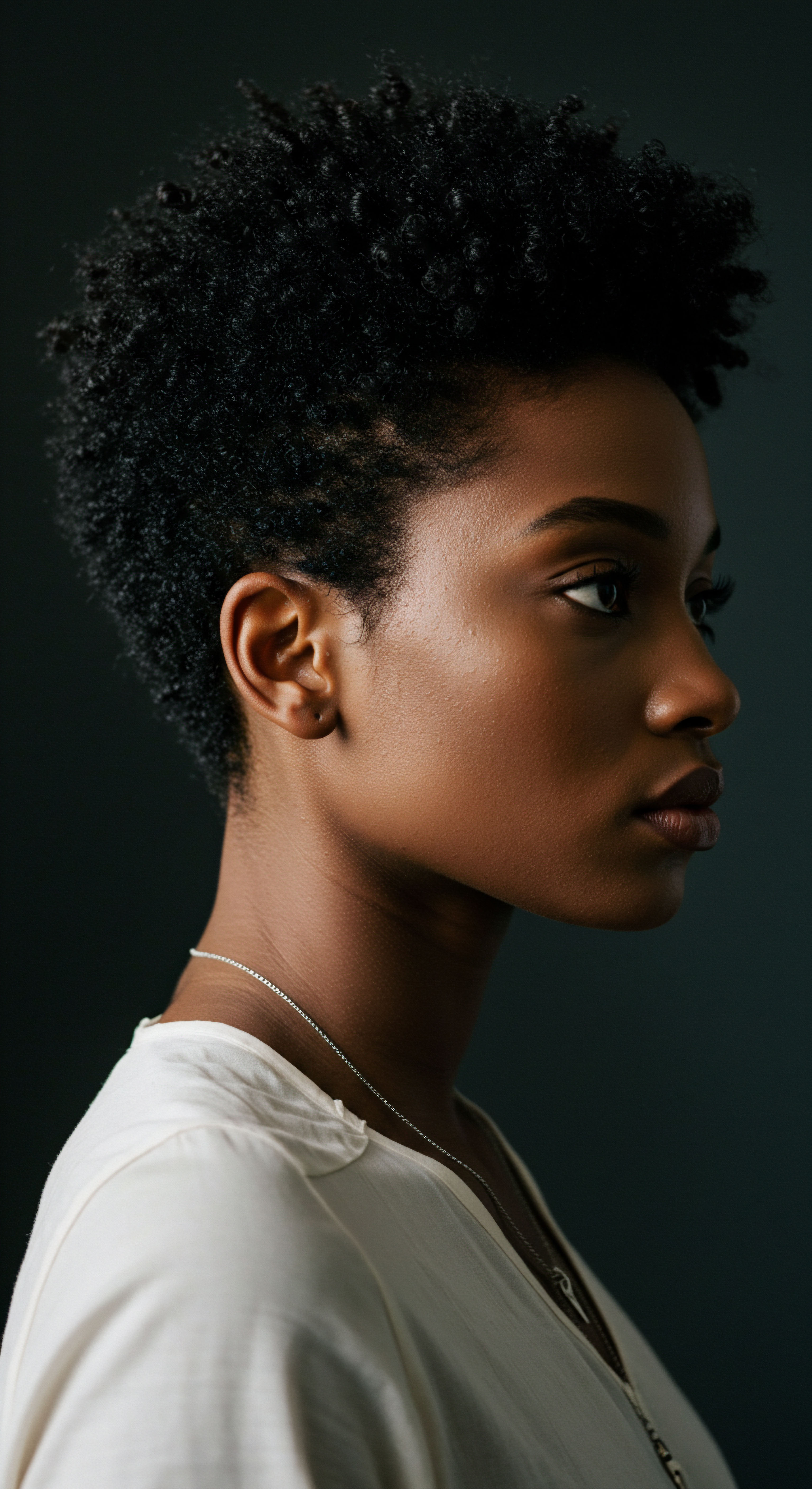
Protective Styling for Sleep
Beyond the sleep surface, the manner in which hair is secured before bed plays a critical role in its protection. The goal is to minimize direct contact with the pillow, prevent tangling, and maintain the hair’s natural moisture and style.
Popular and effective protective styles for sleep include:
- Loose Braids or Twists ❉ These styles gather the hair, reducing its exposure to friction and preventing individual strands from rubbing against each other or the pillowcase. The looseness is key to avoid tension on the scalp and hair follicles, which could otherwise lead to breakage or traction alopecia. For longer hair, a single loose braid or two braids can be effective.
- Pineapple Method ❉ Particularly favored for curly and coily textures, this involves gathering hair into a very high, loose ponytail at the crown of the head, allowing the curls to fall forward. This method keeps the majority of the hair off the pillow, preserving curl definition and minimizing frizz and knots. A soft, silk or satin scrunchie is preferred over elastic bands to avoid creases and breakage.
- Loose Buns ❉ Similar to the pineapple, a loose bun at the nape of the neck or on top of the head can keep hair contained. Again, softness in the hair tie is paramount.
These styles act as a physical barrier, shielding delicate ends from mechanical damage. They also contribute to moisture retention by keeping the hair grouped together, reducing surface area exposure to dry air.

Why is Wet Hair Particularly Vulnerable during Sleep?
Sleeping with wet hair poses distinct challenges due to the altered biophysical state of the hair shaft. When hair absorbs water, its cuticle layers swell and lift, making the hair significantly more porous and elastic. In this swollen state, hair is at its most fragile and susceptible to damage. The American Academy of Dermatology (AAD) advises handling wet hair as little as possible precisely because it breaks more easily than dry hair.
The friction from tossing and turning on a pillowcase, combined with the hair’s heightened vulnerability, can lead to:
- Accelerated Cuticle Damage ❉ The lifted cuticle scales are more easily abraded and stripped away, leaving the cortex exposed.
- Increased Breakage and Split Ends ❉ The hair’s elasticity when wet means it can stretch and snap more readily under mechanical stress.
- Hygral Fatigue ❉ Repeated swelling and contraction from excessive water absorption and drying can lead to a type of damage where the hair becomes overly soft, mushy, and prone to breakage.
- Fungal Growth and Scalp Issues ❉ A damp, warm environment against the scalp and pillow creates an ideal breeding ground for fungi and bacteria, potentially leading to scalp irritation, dandruff, or other infections.
Therefore, ensuring hair is completely dry before sleep is a critical step in any protective nighttime routine, safeguarding both the hair shaft and scalp health.

Relay
Having journeyed through the fundamental architecture of hair and the practical wisdom of nighttime rituals, we now stand at the threshold of a deeper understanding, one that synthesizes the scientific underpinnings with broader physiological and even cultural dimensions. How do the unseen mechanisms of our sleeping body truly orchestrate the vitality of our hair, and what profound connections exist beyond the obvious friction? This section seeks to illuminate the intricate interplay of hormones, cellular repair, and systemic well-being that solidifies the scientific imperative of hair protection during slumber, placing it within a rich, interconnected context.

Hormonal Regulation and Cellular Repair During Sleep
Sleep is far more than a period of inactivity; it is a time of intense physiological repair and regulation. Our bodies, including our hair follicles, operate on a sophisticated internal clock, the circadian rhythm, which orchestrates various bodily functions throughout a 24-hour cycle. During deep sleep, the body prioritizes essential functions such as cellular renewal and the synthesis of crucial hormones.
- Melatonin ❉ This hormone, widely recognized for its role in regulating the sleep cycle, also appears to hold significant sway over the hair follicle. Research suggests melatonin possesses antioxidant properties, shielding follicles from oxidative stress, and may even stimulate cell growth, although more in-vivo studies are needed to fully confirm the latter. Poor sleep can reduce melatonin levels, potentially affecting hair growth.
- Growth Hormone ❉ Secreted primarily during deep sleep, human growth hormone (HGH) is vital for cell regeneration and tissue repair throughout the body, including the active anagen phase of hair growth. Consistent sleep disruption can diminish HGH production, hindering the hair’s ability to grow and repair itself.
- Cortisol ❉ Often termed the “stress hormone,” cortisol levels naturally fluctuate throughout the day, peaking in the morning and declining at night. However, chronic sleep deprivation or poor sleep quality elevates nighttime cortisol levels. Sustained high cortisol is a known contributor to various forms of hair loss, including telogen effluvium, where hair follicles prematurely enter the resting phase, leading to excessive shedding. This creates a vicious cycle where stress from poor sleep impacts hair, which in turn can cause more stress.
The intricate balance of these hormones, supported by adequate sleep, directly impacts the hair growth cycle, blood flow to the scalp, and the overall health of hair follicles.
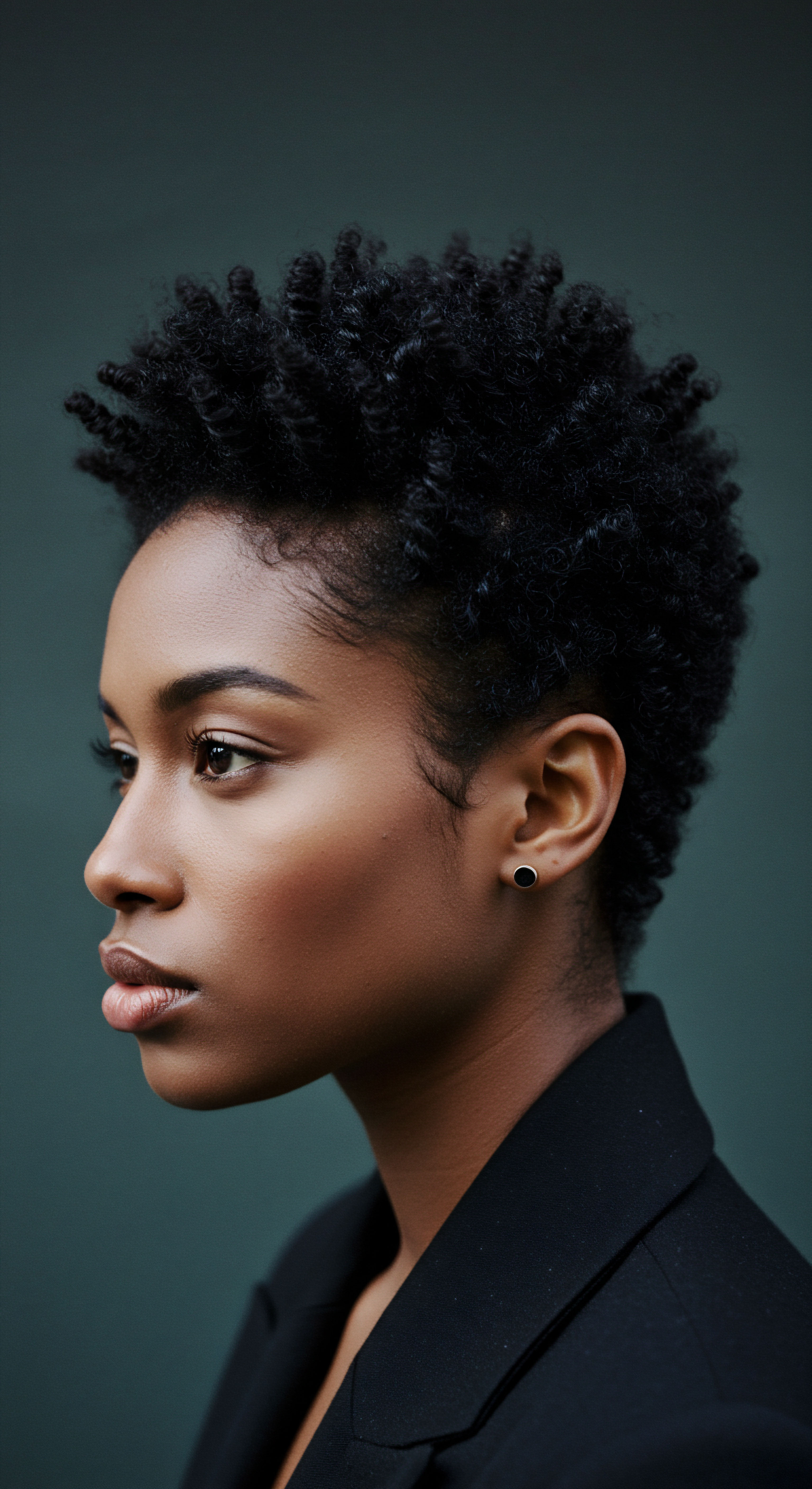
Scalp Health and the Microbiome
Beyond the hair shaft itself, the scalp, the living foundation from which hair grows, undergoes its own restorative processes during sleep. The scalp skin, like the rest of our skin, regenerates and repairs itself according to its circadian rhythm. Disruption to this cycle can lead to:
- Dryness and Irritation ❉ Impaired cell regeneration can result in an accumulation of dead skin cells, exacerbating sensations of irritation and dryness.
- Inflammation ❉ Lack of sleep can increase levels of pro-inflammatory cytokines, which contribute to the pathogenesis of inflammatory skin conditions on the scalp, such as seborrheic dermatitis.
- Compromised Microbiome ❉ The scalp hosts a diverse community of microorganisms, a balanced microbiome being essential for its health. A damp, warm environment from sleeping with wet hair, for instance, can disrupt this balance, potentially promoting the growth of undesirable fungi and bacteria. This can lead to itching, dandruff, and other scalp issues that impede healthy hair growth.
Maintaining a healthy scalp environment through proper hygiene and protective measures during sleep directly supports robust hair growth.
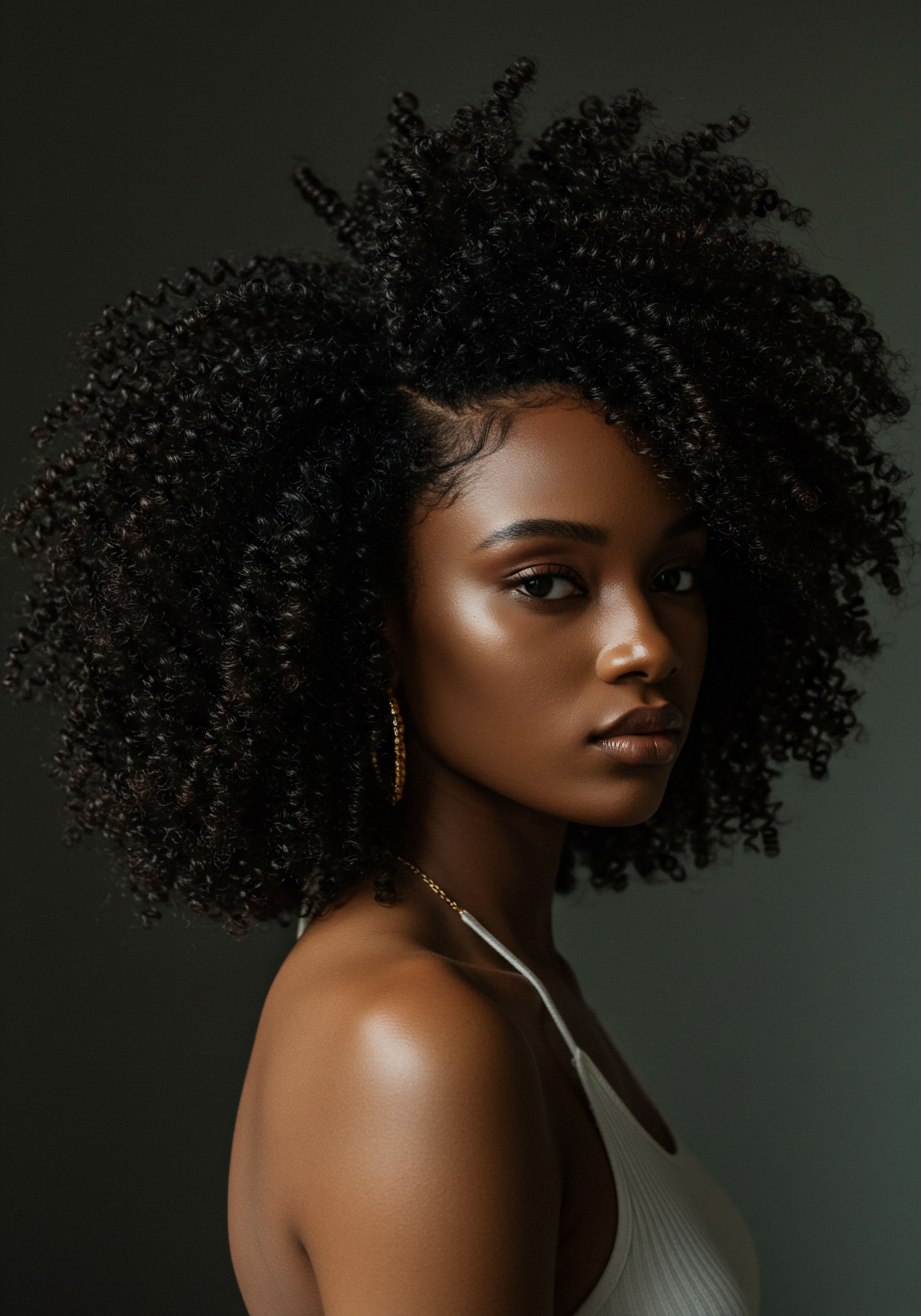
What is the Impact of Sleep on Hair Elasticity and Strength?
The mechanical properties of hair, specifically its elasticity and tensile strength, are critical indicators of its health and resilience. Hair is composed of keratin proteins, which are arranged in complex structures that allow hair to stretch and return to its original shape without breaking. During sleep, particularly with textured hair, this inherent elasticity and strength are continuously challenged.
Friction, as discussed, abrades the cuticle, the hair’s outermost protective layer. When this layer is compromised, the inner cortex, responsible for hair’s strength, becomes vulnerable. This vulnerability is compounded by moisture loss.
Hair that is dehydrated becomes stiff and brittle, losing its natural elasticity. When such hair is subjected to the repetitive mechanical stress of rubbing against a pillow, it is far more prone to snapping and breakage.
A key factor in maintaining hair’s mechanical integrity is its internal moisture content. Well-hydrated hair possesses greater elasticity, allowing it to withstand external forces without fracturing. Conversely, dry hair, often a result of cotton pillowcases absorbing moisture, experiences a reduction in its ability to stretch, making it more susceptible to damage from even minimal friction.
The cumulative effect of nightly friction and dehydration can lead to a gradual degradation of the hair shaft’s structural integrity, manifesting as increased shedding, split ends, and a diminished overall hair quality. This underscores the scientific basis for protective sleep practices ❉ they are not merely about preventing visible tangles, but about preserving the fundamental biophysical properties that keep hair strong and pliable.

Cultural and Historical Contexts of Nighttime Hair Protection
The practice of protecting hair during sleep is not a modern invention; it is a wisdom passed down through generations, particularly within communities with rich traditions of textured hair care. Long before scientific laboratories quantified friction coefficients or analyzed hormonal rhythms, various cultures understood the vulnerability of hair during rest and developed ingenious methods to safeguard it.
In many African and African diaspora communities, hair has always held profound cultural significance, often serving as a marker of identity, status, and heritage. The elaborate and time-intensive styling practices for textured hair meant that preserving these styles, and the hair’s health, overnight was a practical necessity. The use of head wraps, scarves, and bonnets made from smooth materials like silk or satin has been a long-standing practice. These coverings served a dual purpose ❉ maintaining intricate styles and protecting the hair from the rigors of sleep, including friction and moisture loss.
Consider the traditional Brazilian practice of ‘pinning’ hair and covering it with a stocking while sleeping to straighten it without heat, a method born from ingenuity and the desire to manage textured hair. While the mechanisms were not scientifically articulated at the time, the experiential knowledge of reducing friction and keeping hair contained was clearly understood.
These historical and cultural practices provide compelling anecdotal evidence that aligns with modern scientific understanding. They illustrate a collective recognition of hair’s fragility during sleep and the universal human desire to preserve its beauty and health. The continuity of these practices, now supported by contemporary trichology and material science, speaks to a timeless wisdom about hair care that transcends generations and geographies.
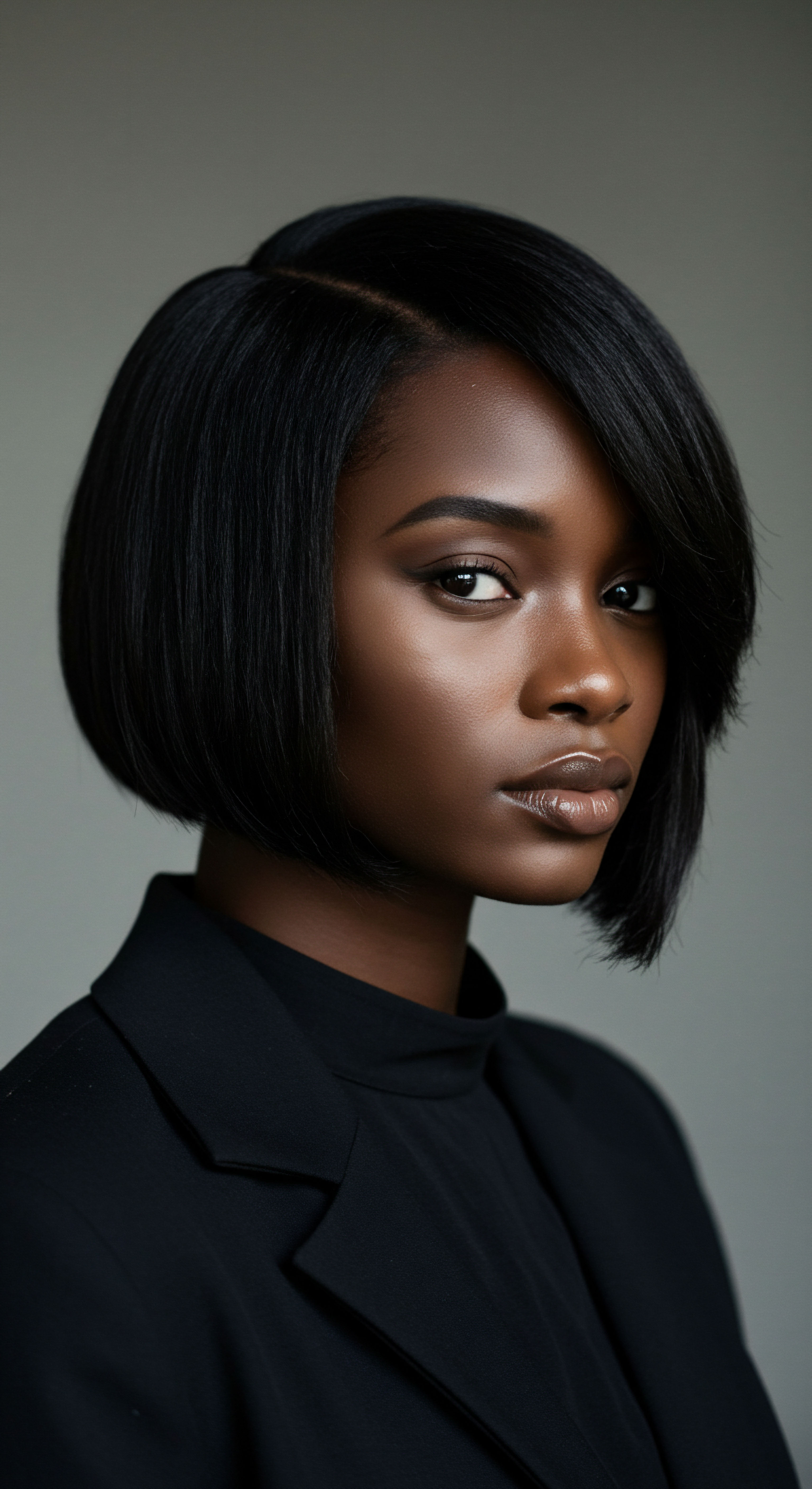
Reflection
As the final whispers of scientific inquiry settle, a deeper truth emerges ❉ the quiet hours of sleep are not merely a pause in our daily lives, but a dynamic stage for cellular renewal and structural preservation for our hair. The journey from understanding the intricate keratin structure to appreciating the delicate dance of hormones and the subtle abrasions of nightly movement reveals a profound connection between our sleep hygiene and the vitality of our strands. This exploration underscores a powerful notion ❉ caring for our hair during sleep transcends simple aesthetics.
It becomes an act of honoring its biological rhythms, respecting its inherent nature, and safeguarding its future resilience. When we choose a smooth pillowcase, or gather our hair in a gentle coil, we are participating in a timeless ritual, one that harmonizes ancient wisdom with contemporary understanding, ensuring that each morning, our hair awakens not just refreshed, but truly restored.
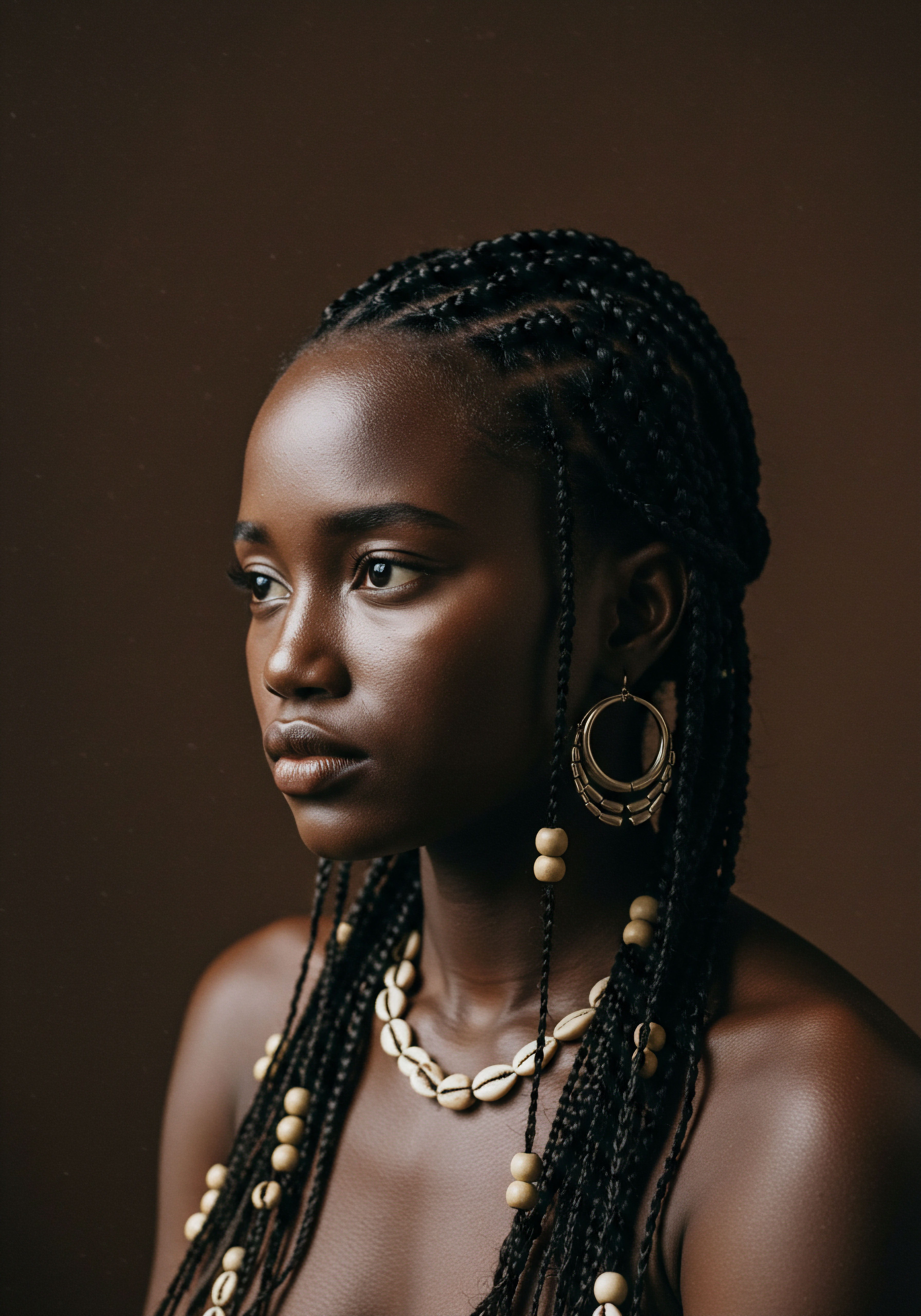
References
- Baron, E. D. et al. (2019). “Night shift work and dermatological conditions ❉ a review.” Journal of the American Academy of Dermatology .
- Bhushan, B. et al. (2014). “Friction Dynamics of Straight, Curly, and Wavy Hair.” Journal of Cosmetology & Trichology .
- Hsu, Y.-C. et al. (2020). “Stress and the hair follicle ❉ mechanisms and implications.” Nature Reviews Endocrinology .
- Kim, H. J. & Lee, W. S. (2013). “The Effect of Sleep Disorders on Hair Loss.” Annals of Dermatology .
- Oh, S. M. et al. (2022). “Association between sleep quality and severity of alopecia areata.” Journal of the American Academy of Dermatology .
- Schwartz, A. M. & Knowles, D. C. (1963). “Frictional Effects in Human Hair.” Journal of the Society of Cosmetic Chemists .
- Sivasothy, A. D. (2011). The Science of Black Hair ❉ A Comprehensive Guide to Textured Hair Care. Sivasothy Hair Media.
- Trueb, R. M. (2003). “The impact of stress and sleep on the hair follicle.” International Journal of Trichology .
- Wang, J. et al. (2021). “Integrative and Mechanistic Approach to the Hair Growth Cycle and Hair Loss.” International Journal of Molecular Sciences .